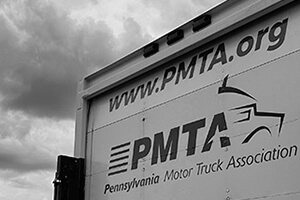PMTA News
The Pennsylvania Motor Truck Association (PMTA) is the only statewide professional association advocating for the trucking industry. PMTA was organized in 1928 to promote the professional and economic growth of the trucking industry and the businesses that support it.
Become a Member
Joining PMTA ensures you’ll be informed of the key issues impacting the trucking industry and know someone is fighting on your behalf. We also provide an array of tangible business services to members from education and awareness programs, up-to-the-minute industry news and alerts and money saving services.
















